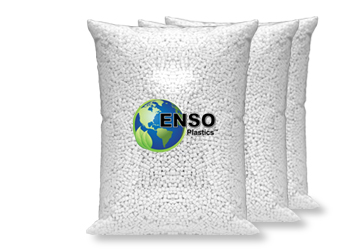You could forgive Scott Vitters the occasional spate of Monday morning blues. As global head of sustainable packaging at The Coca-Cola Company, he has an unenviable job. Some might even call it impossible. Every day, consumers around the world slurp their way through 1.5 billion Coca-Cola products. Packaging those servings accounts for the most sizeable chunk of the company’s environmental footprint. Now Vitters’ bosses back at Coca-Cola’s Atlanta HQ are saying they want to double sales over the next decade.
Yet today finds him surprisingly upbeat. Hitting UK shelves today is PlantBottle, what Vitters calls a “breakthrough technology” destined to green not just Coca-Cola but the entire packaging industry.
“We know that we need to do more with less and we know that we can do that through technological innovations like PlantBottle”, he says.
So how does it work? The theory is simple. Plastic bottles are currently made out of a variety of petroleum-based materials. What the chemistry wonks in Coca-Cola’s labs have done is replace some of those with plant materials.
The result is to reduce reliance on fossil fuels and cut carbon emissions by 8-10% in the process. Furthermore, the plant-based solution is an identical match with polyethylene terephthalate (PET), a recyclable plastic already widely used by Coca-Cola.
“This isn’t about an innovation that’s just a little green widget or flavour of the day … We’re taking the next step of the journey to decouple our plastic from fossil fuels”, Vitters insists.
The numbers seem to back him. Coca-Cola expects to shift over 200 million packs in the UK this year as it switches 500ml bottles of Coca-Cola, Diet Coke and Coke Zero to the greener formula.
The UK is no guinea pig. PlantBottle has already been around for a couple of years, rolled out first in Denmark to coincide with the UN climate change summit in Copenhagen. Coca-Cola currently produces around five billion packs in twenty markets.
Vitters is adamant that the new bottle makes long-term financial as well as environmental sense. Although the plant alternative currently costs more than petroleum, he expects that to drop to parity or below by 2020 – due to predicted oil price increases and efficiencies in the PlantBottle supply chain.
Recyclability is another big win. As one of the toughest, most efficient polymers around, PET can be reused many times. That way, the plant material stays within a “continuous loop” – one up on biodegradable plastics that go to landfill and “then sit like a petroleum bottle”.
The impacts across industry could also be profound. Coca-Cola is working with Heinz to help it produce a PlantBottle-packaged ketchup. Toyota is also said to be interested to use the technology for the seats in its cars.
“Across all commodity plastics, this same pathway could be followed. For HDPE [High Density Polyethylene] plastic, polyethenes, films and even PVC”, says Vitters.
Although Coca-Cola is in the process of patenting the application of the plant-based technology (known as Bio-MEG) to containers, Vitters insists that Coca-Cola ultimately intends for the technology to be open. “This is bigger than Coke”, he says magnanimously. Vitters isn’t even again arch rivals Pepsi getting a look in too. “We believe that our competition will need to be part of this journey.” Coca Cola’s sustainable packaging chief may have skipped to work this morning, but his job is still far from complete.
Work to do
PlantBottle is a step in the right direction, but it’s far from the final destination. The plant-based alternative only covers ethyleneglycol – around 22.5% of PET by weight. Coca-Cola has yet to develop a commercially viable plant solution for the other 77.5%, comprising the petroleum-based compound terephthalic acid.
Vitters admits that his marketing team would have been “much happier” if the ratios were the other way around. As it is, the US beverage giant hopes to have a market-ready, plant-based alternative to terephthalic acid by 2015. A date for its integration into brand packaging is yet to be set.
His problems don’t stop there. ‘Plant-based materials’ all sounds very wholesome and green, but not if their production requires excessive water use, pushes up food prices (by using arable land for non-food purposes) or relies on genetically-modified technologies.
As the Coca-Cola packaging head admits: “We knew inherently that just because it’s a plant, it isn’t better for the environment by any stretch of the imagination…this programe fundamentally rests on the ability to demonstrate proven social and environmental sustainability.”.”
For the moment, the company has turned to Brazil and the bio-ethanol extracted from the country’s vast sugar cane plantations. As a major buyer of Brazilian sugar already, Vitters says Coca-Cola has a “comfort for getting the programme started” there.. Not that the social and environmental record of Brazillian sugar is perfect. Far from it. Vitters admits there is still “a lot of growth room to meet [Coca Cola’s] sustainability criteria”. As a result, the company is working with WWF towards a sugar certification scheme in Brazil.
In the future, Vitters conceded that it’s not sustainable to “source only from Brazillian sugar cane. If PlantBottle takes off in the way he predicts, Coca-Cola will have to look elsewhere, as well as to other plants. Excessive demand could present supply problems as well as pushing sugar prices up – something, Vitters jokes, that “wouldn’t be a good career choice” for him.
Wisely wary
The clever polymer chemists in Coca-Cola’s labs have identified other potential feedstocks, but the company is wary about jumping in too fast.
“We need to be very careful about expanding use of land at a time when we think agricultural environments for feeding a growing population are going to be essential”, says Vitters, who acknowledges the need to proceed “responsibly”..
The US drinks giant is therefore looking to second-generation technologies focused on agricultural waste, such as switch grass, pine bark, corn husks and fruit peel.
Even then, challenges still exist. Supply is one. Finding such agricultural bi-products in commercial volumes is no easy task. Land productivity represents another issue. In many parts of the world, agricultural waste is typically returned to the soil as a natural fertiliser.
“Disruptive” though PlantBottle may be, it falls far from enabling Vitters to fulfil his sustainable packaging brief completely. Commercialising a plant-based solution for the terephthalic acid portion of PET would help considerably. But we still have to wait for 2020 until Coca-Cola bottles of all sizes boast the 22.5% plant content.
Nagging at his mind as well must be the fact that Coca-Cola was recently thrown out of the prestigious Dow Jones Sustainability Index. More galling still, the Index praised Pepsi as a “supersector leader”.
There’s a silver lining, though as Dow Jones did award Coca-Cola an “uptick” for its packaging and material sourcing – another reason Vitters’ Monday shouldn’t be too blue.





